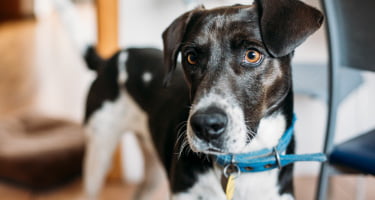If you’re thinking about getting a big dog, researching the breed is the first of many steps before you can take home your large furry friend.
Firstly, have you considered the potential health risks of your desired breed?
Secondly, have you considered how much a large dog may cost?
And lastly, do you know which large dog breeds might fit your personality, bond with your children or blend in with your adventurous lifestyle?
We’ve compiled a list of large dog breeds with all the information you’ll need about their health, personalities and costs, so you can choose the best large dog breed for you and your family.
Bloodhound
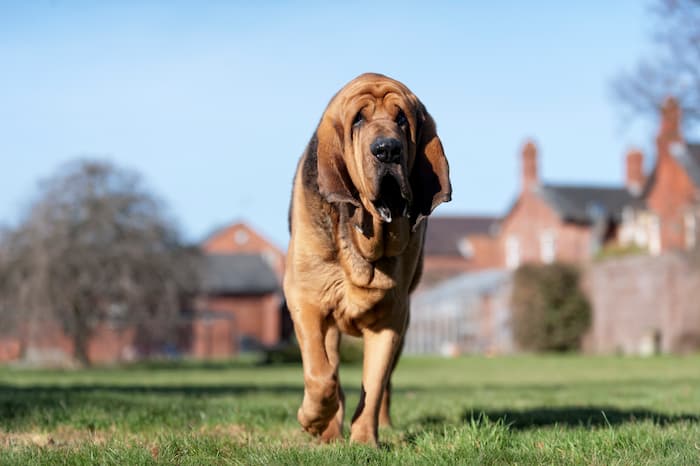
A large scent hound, the Bloodhound was originally bred to track wolves, big cats or deer. Bloodhounds have powerful bodies, short smooth coats and full, deep voices.
Bloodhound Health
Male Bloodhounds measure between 63-69 cm and weigh between 41-50 kg while female Bloodhounds measure between 58-63 cm and weigh between 36-45 kg. [2]
Due to their deep skin folds, bloodhounds are prone to skin fold dermatitis. They’re also predisposed to eye conditions because of droopy lower eyelids, ear infections in their long pendant ears as well as canine hip and elbow dysplasia. [3]
Bloodhound Personality
Bloodhounds are large but affectionate dogs who are great family pets (with both other dogs and children). This friendly breed won’t make a great guard dog but they do have a fairly even temperament and are more vocal in outdoor settings. Bloodhounds enjoy spending time with their family and would prefer it if you didn’t leave them alone.
Great Dane
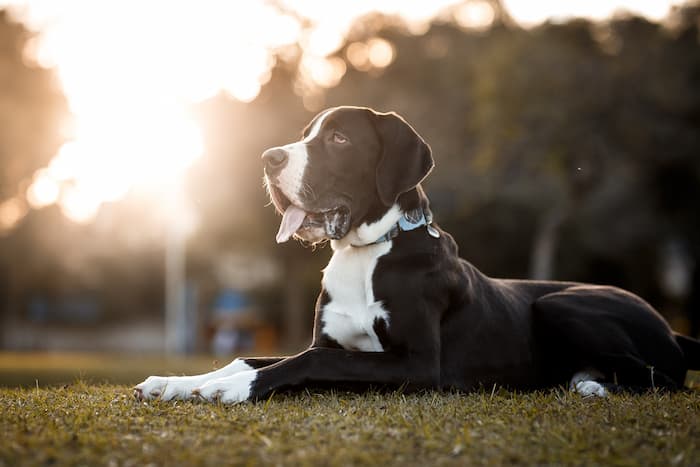
Known as one of the largest breeds in the world, Great Danes were originally bred to hunt boars in Germany. Great Danes are well known for their tall stature, large heads, long limbs, narrow bodies and short fur.
Great Dane Health
Male Great Danes measure between 76-86 cm and weigh between 54-90 kg while female Great Danes measure between 71-81 cm and weigh between 45-59 kg. [4]
Great Danes can experience hereditary health problems. And due to their size, Great Danes are prone to:
- Gastric dilation-volvulus (GDV or Bloat)
- Hip dysplasia
- Dilated cardiomyopathy (DCM)
- Wobbler Syndrome [4]
Great Dane Personality
Great Danes have a great reputation as family dogs and are known as “gentle giants” around children and other pets (especially if they’re raised together). They have a calm and laid-back demeanour and are affectionate to their family members.
Bernese Mountain Dog
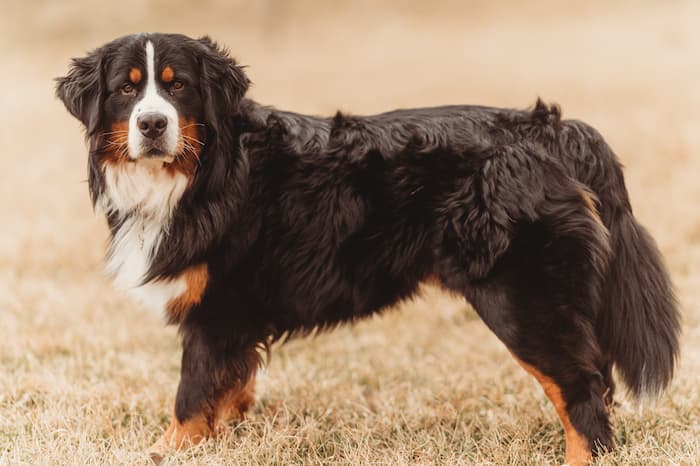
This breed can be traced back 2,000 years to when the Romans invaded Switzerland. And over centuries, Bernese Mountain Dogs (also nicknamed ‘Berners’) have evolved into the dog breed that we know and love today.
Bernese Mountain Dog Health
Male Bernese Mountain Dogs measure between 64-70 cm while females measure between 58-66 cm. Both males and females of this breed weigh between 40-44 kg. [5]
Bernese Mountain Dogs were bred to live in the Alps and are at their healthiest in cold weather and snow. The Berner’s black coat absorbs heat from the sun; which means that Berners will seek shade, even on cool days.
Bernese Mountain Dogs are prone to:
- Hip and elbow dysplasia
- Blood disorders including Von Willebrand’s disease
- Cancer
- Progressive retinal atrophy (a degenerative eye disease)
- Bloat [6]
Bernese Mountain Dog Personality
Berners are smart and are easy to train (especially when they’re young). Their pleasant nature makes them great family or companion dogs and they love receiving a lot of affection from the people around them. They’ll bark to signal the arrival of a visitor in the home but will settle down with reassurance from their owners.
Anatolian Shepherd Dog
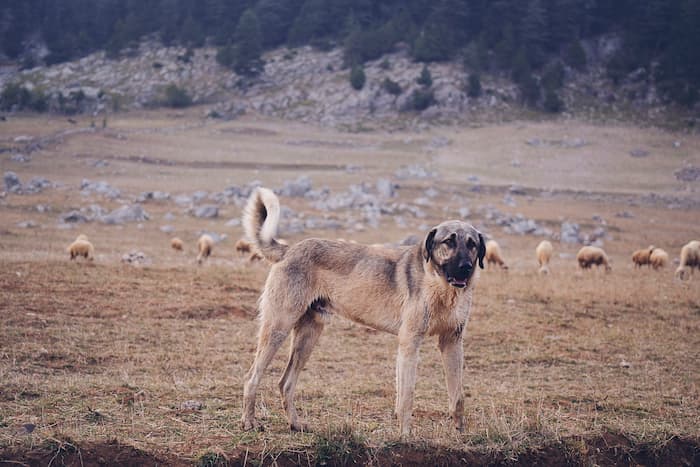
Originating in Turkey, the Anatolian Shepherd dog is an ancient breed that was once used for hunting lions and horses but is now used for protecting livestock (e.g. sheep and goats).
Anatolian Shepherd Health
Male Anatolian Shepherds measure between 74-81 cm and weigh between 50-64 kg while females measure between 71-79 cm and weigh between 41-59 kg. [7]
The Anatolian Shepherd is a largely healthy breed due to centuries of correct breeding measures. This breed most commonly experiences entropion (inward-turning eyelids) due to their droopy eyes and sensitivity to anaesthesia. [8]
Anatolian Shepherd Personality
As natural guard dogs, Anatolian Shepherds are very independent, intelligent and territorial around the livestock they are protecting. They’ve been bred to use their instinct which can make training this breed difficult but not impossible.
These dogs need a lot of space to run safely and are best suited to areas with a lot of lands, like on a farm.
Newfoundland
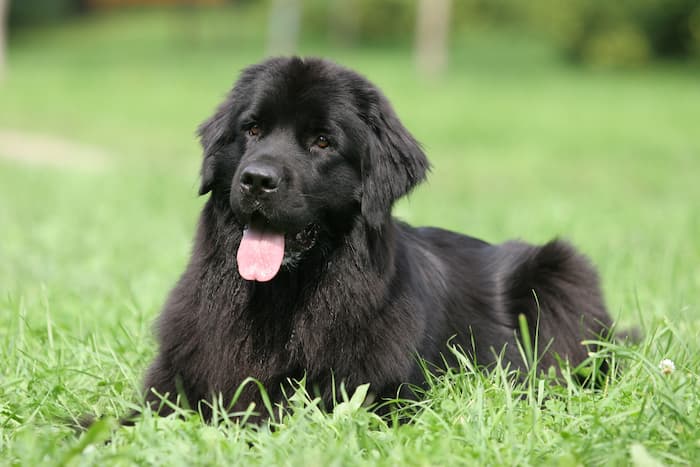
The Newfoundland (or Newfie) breed was first developed in the region of Newfoundland and is a descendant of the indigenous St John’s Dog. While not much is known about this breed's origins, Newfoundland is considered one of the oldest breeds in existence.
Newfoundland Health
Male Newfoundland dogs should measure 71 cm and weigh between 64-69 kg while females measure should measure 66 cm and weigh between 50-54.5 kg. [9]
Common dog diseases and conditions that affect Newfoundlands include:
- Hip dysplasia
- Heart disease
- Cystinuria (which can cause kidney, ureters and bladder stones)
- Ear infections [10]
These dogs have medium-long coats and thrive in colder climates, in freezing cold and in wild oceanside conditions.
Newfoundland Personality
Newfies, as they’re known, are very docile and gentle but also incredibly strong. They love attention from people and are very patient with children, making them incredible family pets. They’re very loyal to their families but with their size, you’ll need to monitor their movements, especially around small children.
German Shepherd
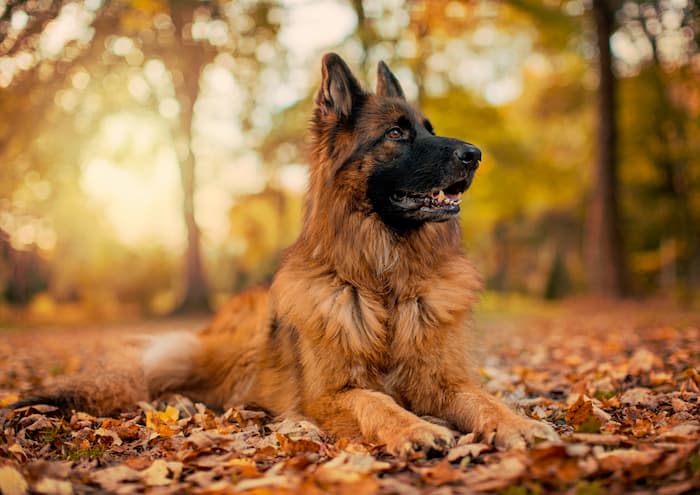
Originally bred for herding, German Shepherds are now more commonly used to guard and protect. They’re a breed that’s easily recognised, large, with a medium to long thick coat.
German Shepherd Health
Male German Shepherds measure between 60-65 cm and weigh around 36 kg while females measure between 55-60 cm and weigh around 30 kg. [11]
One of the things to know before owning a dog is that they’re all prone to health issues regardless of their breed. For German Shepherds, the most common issues include:
- Hip dysplasia
- Elbow dysplasia
- Elbow hygroma (a growth)
- Gastric dilation-volvulus (also known as bloat)
- Degenerative myelopathy (impact on a dog’s spinal cord) [12]
German Shepherd Personality
German Shepherds are highly intelligent, obedient and very trainable. They’re considered a safe breed and are very protective of their close family members. Keep in mind that their unique instinct to protect can turn into over-protectiveness if they’re not socialised at a young age.
Irish Wolfhound
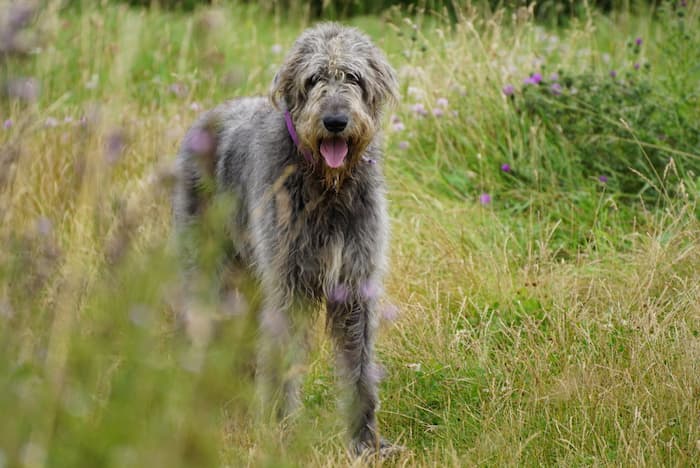
Irish Wolfhounds are giant dogs that were originally bred to hunt wolves but they’ve also been used to guard herds and property as well as hunt for elk, deer and boars. They’re strong dogs with rough, long, shaggy coats, and wiry eyebrows and their tales hang down with a slight curve
Irish Wolfhound Health
Irish Wolfhound Personality
This breed is gentle and has a friendly temperament around its family members. Irish Wolfhounds are also unconditionally loyal to their owners, making them suitable companions for families with children.
Saint Bernard
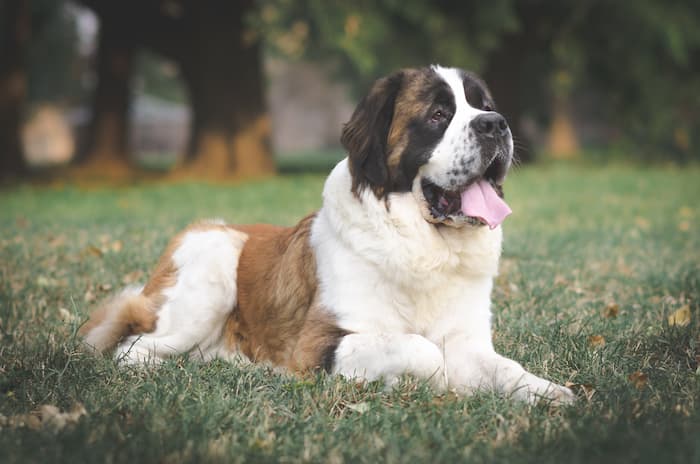
Named after the Hospice of the Great Saint Bernard Pass, this giant dog breed was taught to rescue lost and distressed travellers in the Alps between Switzerland and Italy. This breed is known for being incredibly strong, having a superior sense of smell, an innate sense of direction and a thick weather-resistant coat.
Saint Bernard Health
Male Saint Bernards stand at a minimum of 70 cm and females stand at 65 cm. Their weight depends on the size and build of the dog and can range from 68-91 kg. [15]
The sheer size of this breed makes them susceptible to bone-related issues. This means that they should be eased into exercising gradually to avoid putting pressure on their bones, tender tissues and limbs. This applies from the time they’re a puppy to when they’re fully grown adult dogs.
Their most common health problems include:
- Hip and elbow dysplasia
- Gastric dilation volvulus (bloat)
- Degenerative myelopathy
- Entropion (eyelids roll inwards) and ectropion (eyelids roll outwards)
- Heart problems [16]
Saint Bernard Dogs are also highly sensitive to heat so it’s important to learn how to keep your dog cool in summer.
Saint Bernard Personality
This breed is known for being extremely trustworthy and kind, showing an affectionate nature to those they love. A slow thinker, you’ll have to be patient while you’re training them as puppies. They’ll show a calm and patient temperament inside the home and make great family dogs, especially around children.
How much do big breeds cost?
With pet ownership on the rise in recent years, the cost to own a pet in Australia has increased too.
According to Animal Medicines Australia (AMA), 22% of pet dogs cost more than $1,000 in Australia, with dogs acquired since March 2020 averaging $1,740. [17]
The overall cost related to large dog breeds will depend on several factors including:
- How much pet food do they eat?
- How often do you take them to the vet and for what reason?
- How much do you spend on pet healthcare products (flea/worming treatments, tick prevention etc.)?
- How many products or accessories do you buy for your dog?
- How much do you pay to insure your pet?
| Type of Breed | 1-year-old - Average Accident & Illness | 5-year-old - Average Accident & Illness |
|---|---|---|
| Bloodhound | $1,829 | $2,514 |
| Great Dane | $1,940 | $2,575 |
| Bernese Mountain Dog | $2,140 | $2,930 |
| Anatolian Shepherd Dog | $1,146 | $1,508 |
| Newfoundland | $2,178 | $2,915 |
| German Shepherd | $1,270 | $1,672 |
| Irish Wolfhound | $1,904 | $2,466 |
| Saint Bernard | $2,075 | $2,797 |
Giant dog breeds have a higher probability of health issues during their lifetimes, typically making Newfoundland dogs, Bernese Mountain dogs, and Saint Bernard dogs more expensive breeds to insure.
While breeds like German Shepherds are more affordable to insure due to their average probability of having health issues during their life.
If you’re looking for a personalised report on your pet’s habits and health then Budget Direct’s BudPet app is the ideal tool. You can retrieve your dog’s report at any time and keep a close eye on how well you really know your pet.



